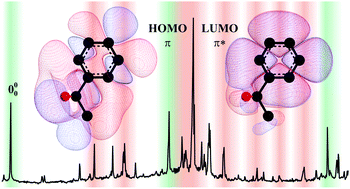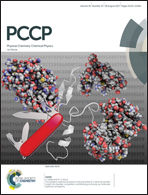Chiroptical inversion for isolated vibronic transitions of supersonic beam-cooled molecules
Abstract
Circular dichroism-resonance-enhanced multiphoton ionization (CD-REMPI) was used for CD measurements on several single vibronic transitions of supersonic beam-cooled (R)-(+)-1-phenylethanol. Due to the low molecular densities within a supersonic beam and the expected small anisotropy factor of 1-phenylethanol in the permille region, the precision of the experimental method had to be significantly improved. Therefore, a single laser pulse evaluation combined with a twin-peak technique enabled within the used supersonic beam setup is presented. For the electronic transition S0 → S1 of (R)-(+)-1-phenylethanol (π → π* transition of the phenyl ring at 266 nm) ten different vibrational modes as well as the 000-transition were investigated with one-color (1 + 1) CD-REMPI. The results deliver new experimental insights on the influence of molecular vibrations on the anisotropy factor. TD-DFT theoretical predictions show how the angle between the electronic and magnetic transition dipole moments of the electronic transition can be modified by different vibrational modes, making even a flip of the sign of the anisotropy factor possible.

- This article is part of the themed collection: 2017 PCCP HOT Articles


 Please wait while we load your content...
Please wait while we load your content...